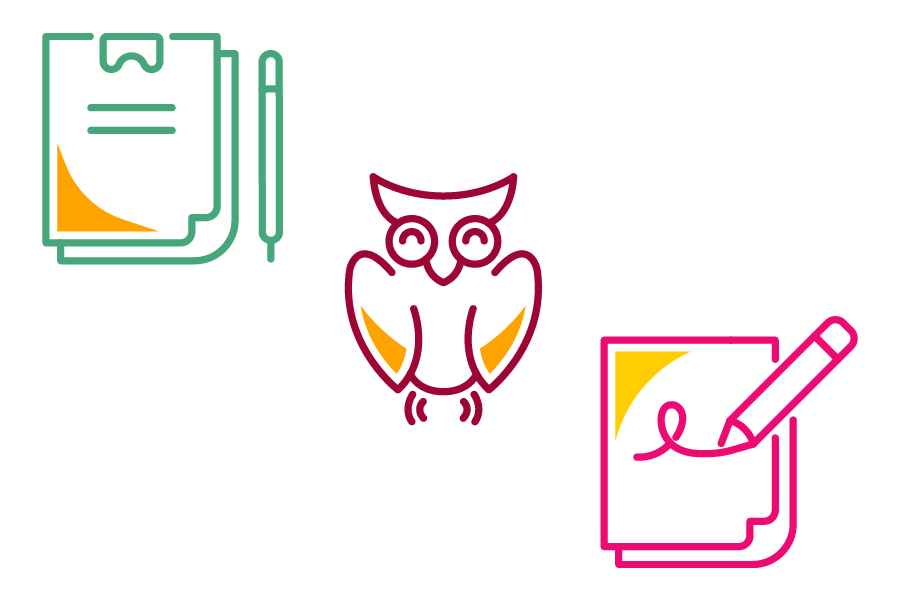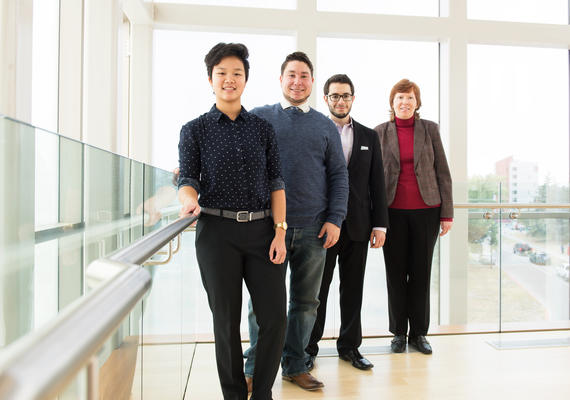Grants general information
Reporting overview
Learn about the impact that Teaching and Learning Grant funded projects have had on students, researchers and the community between 2015 and 2023 in the infographic below.
Past reporting
Learn about program outcomes from previous years and explore what past recipients have been up to in the reporting and publication list below.


Past grant recipients
The University of Calgary Teaching and Learning Grants program started in 2014. Since then, approximately $6 million in funding has been allocated to 272 teaching and learning research projects.
Sample Development and Innovation Grant Projects
Collaborators: Jian Choo, Mackenzie Margetts, Nazia Sharfuddin, Mitchell Rohatensky, Sean Crooks, Lucas Streith, William Kennedy, Nathan Zondervan, and Nicole Ertl
On-call clinical clerks are faced with impromptu electronic alerts that need immediate response. One opportunity to train learners for these clinical firsts are transition-to-clerkship courses. At the University of Calgary, the “Intro to Clinical Practice” course prepares trainees for clerkship rotations.
The “BEEP-BEEP SIM” educational innovation introduces on-call simulation training for medical students, through the gamification of learning by borrowing elements from escape games.
Teams of 5 students will have the opportunity to respond to 6 pager scenarios. 6 doors will be accessible to the students, with each door labelled with an electronic text-page to the students (the on-call scenario). Behind each door contains a series of activities to challenge and teach students content. Successful completion of each room occurs when the students unlock a box that contains a summary card of the teaching points for that room. The physical ability to travel from room to room parallels the theme of being on-call. Once all 6 rooms are complete, a debrief session highlights teaching points.
The self-determination theory suggests that people are motivated when the needs of competence, autonomy, and relatedness are met. Students achieve competence through an active learning modality and peer-teaching. Students have the autonomy to select which patients they would like to manage first. Students learn through collaboration. Repetition in the activity is deliberately integrated, where students initially explore the material, then rehearse it through the summary cards, and retrieve and reconsolidate the material one final time in the debrief.
I would like to develop an infographic-coloring brochure to assist students to understand the Canadian approach to carbon pricing. Focused on the Pan-Canadian carbon pricing framework and the Alberta, BC and Quebec carbon pricing systems, this infographic-coloring brochure will provide an opportunity for students to engage with the complexities of this substantive area. This innovation will provide a multi-sensory product around which students can engage within the classroom and communicate about these complex legal tools outside the classroom. In keeping with the University of Calgary’s Institutional Sustainability Strategy, the ultimate goal is to develop an innovative tool that equips my students – future lawyers – to be ‘thoughtful, communicative citizens and leaders’ (at 6) who are fully able to engage in the ongoing national and provincial conversation relating to carbon pricing.
Sample SoTL Grant Projects
The curricular peer mentoring program at the University of Calgary is modelled on a service learning model where students complete an academic-for-credit class in the theories of teaching and learning while doing a practicum where they mentor in an undergraduate class working with a host instructor. Through student-led research on qualitative measures like interviews and focus groups with peer mentors and host instructors, we know that Peer Mentors generally enrich the learning in post-secondary classrooms. But, to date, we have no concrete quantitative data to show us specifically how a classroom’s learning environment is affected by a peer mentor. One way qualitative researchers can measure classroom activities in a more quantitative way is by administering Structured Observational Protocols. Currently, there is no useful observational protocol that measures or determines how peer mentors affect learning in a classroom. This project will develop and administer a Peer Mentoring Observational Protocol (PMOP).
Creative Assignment Design: A Feminist Pedagogical Framework for Student Learning
Samantha C. Thrift – Faculty of ArtsCreative assignments are non-traditional and novel assessment methods or outputs by which instructors can gauge student learning; in my courses, these activities includes assignments such as digital storytelling, multi-media memoirs, interactive digital mapping, fan auto-ethnographies, and video chainletters. In my communication and media studies [COMS] classrooms, I use creative assignments to enhance students’ comprehension of the intersectional politics of media access, authorship and (self-) representation, identity formation, and community building through media-making practice. As a form of feminist pedagogy, I can use these assignments to target learning objectives that conventional assessment methods (ex. essays, tests, exams) tend to deprioritize, such as collaboration, adaptability, creative problem solving, risk taking, and self-reflection.
Traditional mechanisms of student feedback, such as USRIs and Arts course evaluations, focus on the overall “fairness” of assessment methods and the general “appropriateness” of exams and papers. However, these feedback categories do not capture the experiential and process-oriented mode of learning characteristic of creative assignments; thus, other forms of student feedback are needed to determine whether these unconventional assignments are having the desired effect for learners.
Design studio matrix (DSM): Supporting the decision-making process as part of a reflective practice
Fabian Neuhaus, Graham Livesey, Enrica Dall’Ara, Sandra Abegglen, and Mary-Ellen Taylor – School of Architecture, Planning, and LandscapeThe design studio is the signature pedagogy for the design disciplines. This setting has developed as an academic, more formalized form of an apprenticeship and fosters problem-based learning.
The learning process for students puts great emphasis on creativity, analysis, planning and reflection. It is based around a verbal discussion supported by visualisations in the studio with peers (peer learning), at desk reviews with the instructor or at design crits with a panel of experts.
Whilst the design studio format has a very long tradition and is widely practiced at design schools around the world there is very little research into its practice. There are few pedagogical tools available to help plan, structure and record the learning process.
In one studio at EVDS we have proposed a new tool which we call the Matrix to help students and instructors manage the learning (design) process. It helps students to focus their investigation (selected topics), record their process (iterations of the Matrix) and reflect on the result and the process with the instructor or panel (structured discussion).
The hypothesis is that beyond the practical applications of this parametric tool for learning, it simultaneously helps to shift the focus of the design education away from the product towards the process and the reflection thereof. As a result, design decision-making becomes formally student lead and strengthens students’ ownership of their learning. Over the next two years we want to investigate the Matrix in its application and extend the methodological framework around it.
